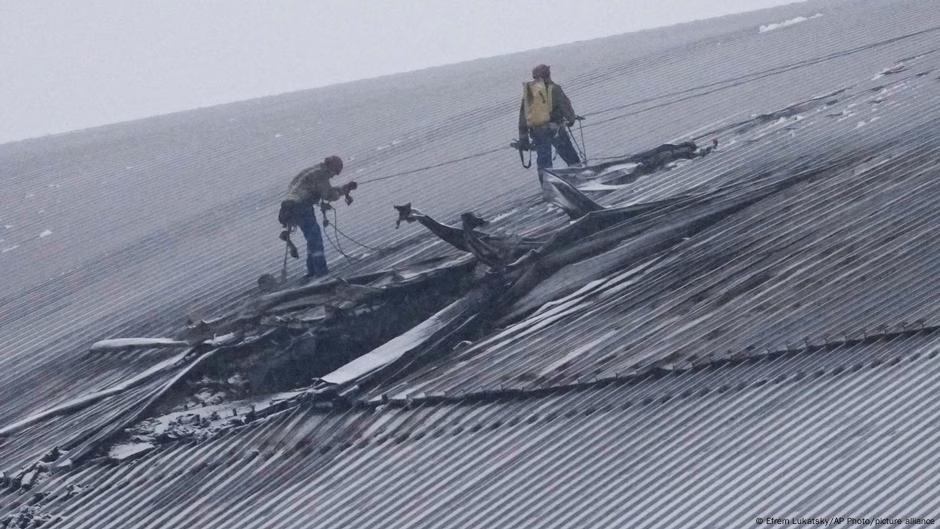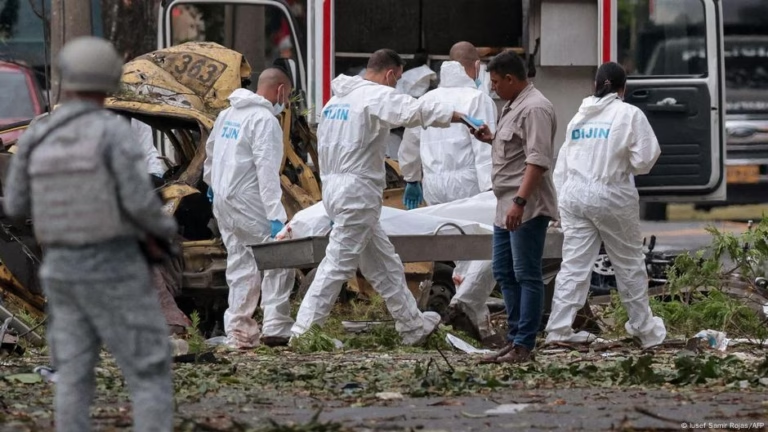“The main mission is to close the hole, which is approximately 15 square meters [around 162 square feet] in size, as well as the more than 200 small holes that the State Emergency Service of Ukraine drilled into the shell during firefighting operations,” said Hryhoriy Ishchenko, the head of the State Agency of Ukraine on Exclusion Zone Management, which is responsible for the area around the Chernobyl power plant.
He stated that experts would soon arrive on-site to examine the structure and that “preliminary recommendations on the repair work should be available within a month.”
Embedded video — Ukrainians prepare for nuclear disaster near Chernobyl
A €1.5 billion megaproject
The NSC was constructed over a pre-existing protective shell called the sarcophagus, which is in place to prevent the release of radioactive contaminants from the reactor that exploded in 1986. The NSC was built after 45 donor countries contributed approximately €1.5 billion for the project. Eventually, 10,000 people from 40 countries participated in the construction of the shell, which took 12 years, from the signing of contracts to the moment the NSC was ready in 2019.
Ishchenko noted that there was still no preliminary estimate of the damage caused by the Russian attack. Research institutes involved in the investigation would provide estimates, he added.
“Radiation levels are normal,” Ishchenko said. “The staff is still working normally as well. Only the pressure regulation system is no longer functioning, and slightly higher humidity levels have been detected. This is due to the impact and the drop in pressure below the shell, which is no longer sealed.”
Although experts say the drop in pressure in the NSC does not pose any immediate threat, there are other dangers. Dmytro Humeniuk, a safety analysis expert at Ukraine’s State Scientific and Technical Center for Nuclear and Radiation Safety, stated that it is currently impossible to dismantle the old sarcophagus. The NSC was built in part to replace the old shell, but inside the old shell, there are still 18 unstable beams. Three of the main beams could reportedly collapse at any time. If this were to happen under the new but now damaged protective structure, radioactive dust could be stirred up and radioactivity released, Humeniuk said. “The protective shell is currently not fulfilling its function, which is to contain the nuclear fission products beneath it.”
No need to stockpile iodine
Despite this, experts in Ukraine say that people should not start stockpiling iodine tablets or worry about evacuation. However, they do regret that the efforts of the international community, which collected funds to build the NSC, have gone to waste.
“It is impossible to weld and repair the damaged shelter on site because the radiation levels there are very high and the workers would be contaminated,” Humeniuk explained. “The protective shelter was constructed at a distance and then with the use of rails, it was slid over the old sarcophagus. Now that the rails have been dismantled, we will have to do something else.”
Jan Vande Putte, a nuclear expert at Greenpeace Ukraine, stated that there are very few options. “Due to the high radiation levels above the sarcophagus, the entire Chernobyl protective shell will probably have to be moved back to the place where it was built on rails before the expensive repairs can be carried out,” he added that the costs of doing this are completely unknown.
Representatives of the European Bank for Reconstruction and Development visited Chernobyl on March 18 and spoke with the power plant’s directors, according to a report on the power plant’s website. They also inspected the technical units of the NSC and the area under the protective shell.
After the meeting, €400,000 from the International Chernobyl Cooperation Account, which the European Bank manages, was approved for a specialist-led damage assessment.
This article was originally published in Ukrainian.








